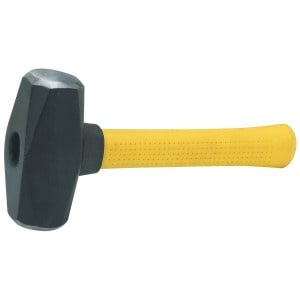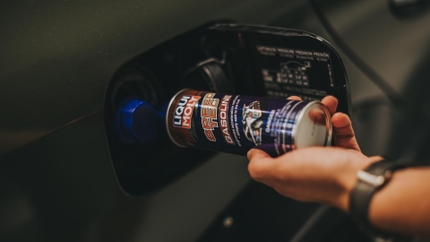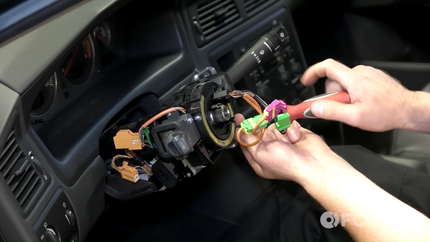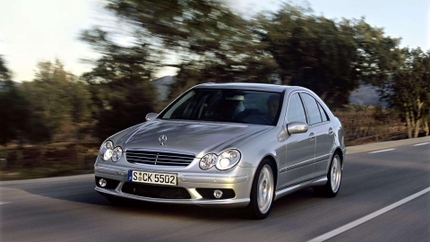- 05/27/2014
- 2 Min Read
- By: Andrew Peng
4 Easy Ways to Remove Stuck Bolts, Screws & Fasteners
Every DIY'er will eventually encounter that stuck bolt/nut that refuses to release and let you get on with your DIY adventure. Trying to change a control arm? The ball joint is probably going to resist coming out. Changing out a strut? You'd think that the strut to knuckle bolts were attached and then welded on at the factory!
Here are a few of the more common fasteners that tend to get seized up, and a few methods of loosening them without admitting defeat and bringing the car to a garage.
 Ball Joints
Ball Joints
In my experience, the nut that holds the ball joint to the control arm is usually pretty easy to remove - it's popping the ball joint out of the control arm that usually puts up a fight. There are ball joint pullers and ball joint forks and all manners of special tools, but the easiest way I found requires only a sturdy drilling hammer. Remove the nut holding the ball joint to the control arm. Spray down the ball joint with penetrating oil. Use the drilling hammer and give the side of the control arm a few good firm whacks. You won't damage anything - the suspension components are designed to take a beating. The vibration will loosen the ball joint - use a pry bar to push the lower control arm down and out of the way and release it from the ball joint.- Nuts and Bolts - Part 1
Having owned a car from the Northeast, I've had my fair share of suspension components that outright refused to come out in tight spaces - especially in tight corners where my pneumatic tools couldn't fit. First you'll need to make sure that the threads are clean - use a wire brush to clean off the threads and then spray down the threads with penetrating oil. You will need a sturdy metal 6-point box wrench to put around the fastener. Hit the end of the wrench with a dead blow hammer or drilling hammer in the direction to loosen it. Usually one or two firm whacks will loosen the fastener enough for you to get a ratcheting box wrench or socket wrench to take it off the rest of the way. The industry makes specialized wrenches called "slugger wrenches" to be used in this manner but they are usually reserved for much larger fasteners on heavy machinery. - Nuts and Bolts - Part 2
Sometimes even if you use impact tools, the fastener will refuse to come out. Use heat from a torch to heat up only the fastener. Try not to heat up the surfaces that the fastener is attached to - the goal is to get the fastener very hot, right before a dull cherry red hot. Once the fastener is right before glowing, spray it down generously with penetrating oil. Make sure to have a rag handy! The oil you sprayed may spontaneously catch on fire. The thermal shock of hot then cool can help loosen seized threads. If necessary, get the fastener hot again and then use in conjunction with method #2 above to leverage your changes of removing the fastener. - Plastic trim
Coming from the computing and gadget world, there's a specialized tool used to remove and take apart delicate plastic components without marring or scratching the surface. The tool is called a "spudger" - basically a plastic stick with a sharp chisel point used to pop tabs and connectors out without aesthetically damaging the surface. Many auto parts and electronics stores sell plastic "trim removal tools" that can help you pop and remove plastic and composite panels without damaging, cracking, or scratching them. Of course, sometimes it's unavoidable that you break something - however the correct tools can help ensure success.
About the Author: Andrew Peng
 Andrew is an aerospace engineer and car fanatic that enjoys working on his garage of Volvos and Subarus. When he's not busy attending car meets and shows or taking things apart, he enjoys driving his cars and finding interesting new ways to break them. He can be reached via his personal website at http://andrewpeng.net, Facebook, Google+, Instagram, or Twitter.
Andrew is an aerospace engineer and car fanatic that enjoys working on his garage of Volvos and Subarus. When he's not busy attending car meets and shows or taking things apart, he enjoys driving his cars and finding interesting new ways to break them. He can be reached via his personal website at http://andrewpeng.net, Facebook, Google+, Instagram, or Twitter.





